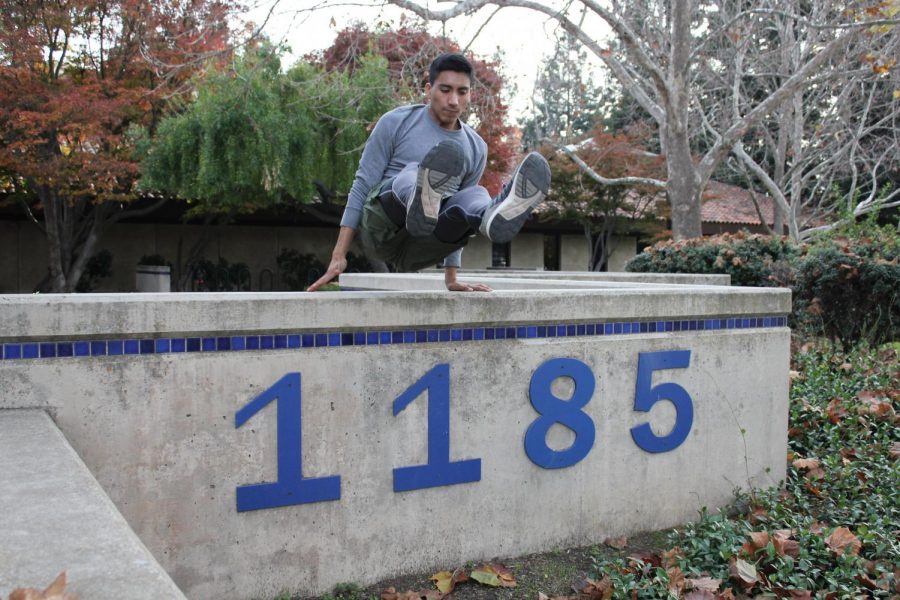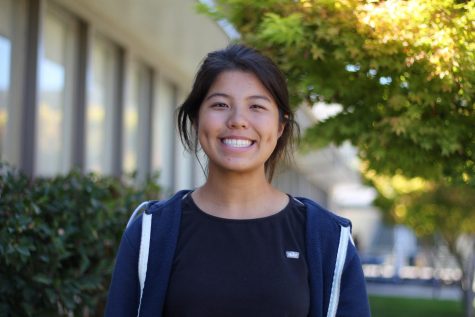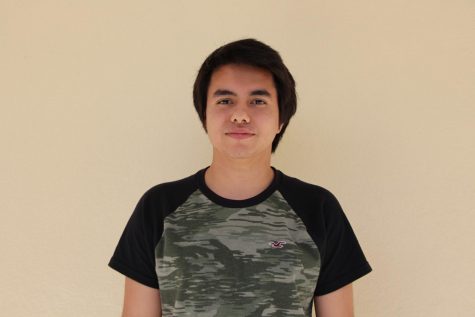Josue Martinez’s artistic spin on parkour
December 11, 2017
Senior Josue Martinez stands and gazes ahead at his next course, surveying each ledge and wall carefully. He then proceeds to leap, flip and twist to get to his destination. When most people talk about overcoming obstacles, they’re usually referring to severe sports injuries or fears like nervousness and anxiety. But for Josue, some of his biggest obstacles are literally that: obstacles.
Josue has been a dedicated parkourer since seventh grade, and he spends most of his free time finding creative ways to run, jump and climb over obstacles. But over the years, what used to be “just messing around” eventually evolved into a more serious form of artistic expression.
“It’s like [a] dance,” Josue said. “We come up with a routine or a path and we have to break it down and practice each aspect. Creativity goes into it. It’s not like we’re doing this just to do it. It’s an artistic thing that people overlook.”
Whether it be in parks, plazas or gyms, Josue creates his own courses by finding unique uses for everyday items. More often than not, his routes are improvised and visualized spontaneously, with stunts performed based on his surroundings.
“You can do [parkour] anywhere,” Josue said. “Sometimes it’s improvised, sometimes you see this certain thing that you want to do. You kind of [have to] visualize it. Sometimes it may work, sometimes it may not.”
As a starting point, Josue picks a random move that he’s comfortable with and then proceeds to build off of each previous stunt, often spending anywhere from a few hours to a whole day repeating each one until he can complete them all successively. When doing parkour, he has to look more closely at ordinary objects and always tries to challenge himself to utilize them creatively in his maneuvers.
“You have to look at something that people usually [miss],” Josue said. “The most basic example is a bench: people usually just sit on a bench, but you can do a whole lot more with [it]. You can jump on it, or flip off of it — just use it in some different way.”
When performing in public places with his friends, spectators stop to watch them do flips and tricks. Their reactions are typically mixed— some people commend them for their feats, while others are more disapproving.
“Sometimes people stop and look [at us] as if we’re crazy,” Josue said. “Some people clap, some people say the most common things like ‘do a backflip.’”
Parkour is mostly characterized by its history of unfortunate mistakes and mishaps made by seemingly irresponsible kids. But Josue believes that those who judge parkour are simply hinged on exaggerated stories and media coverage.
“Media just portrays it as reckless behavior,” Josue said. “People call [us] adrenaline junkies or insane, but it’s really biased — they judge it because they don’t understand it.”
Josue has admittedly hurt himself in the past: as a freshman, he severely bruised his heels and struggled to walk properly for over a month. Some of his friends continue to worry about his safety, but because of the constant danger of serious injury, he always makes sure to calculate his moves and be mindful of his limits.
“There definitely is [that element of fear], that feeling in your chest that you can’t really escape,” Josue said. “It never goes away [because] it’s a survival instinct. It will always be there as a precaution.”






